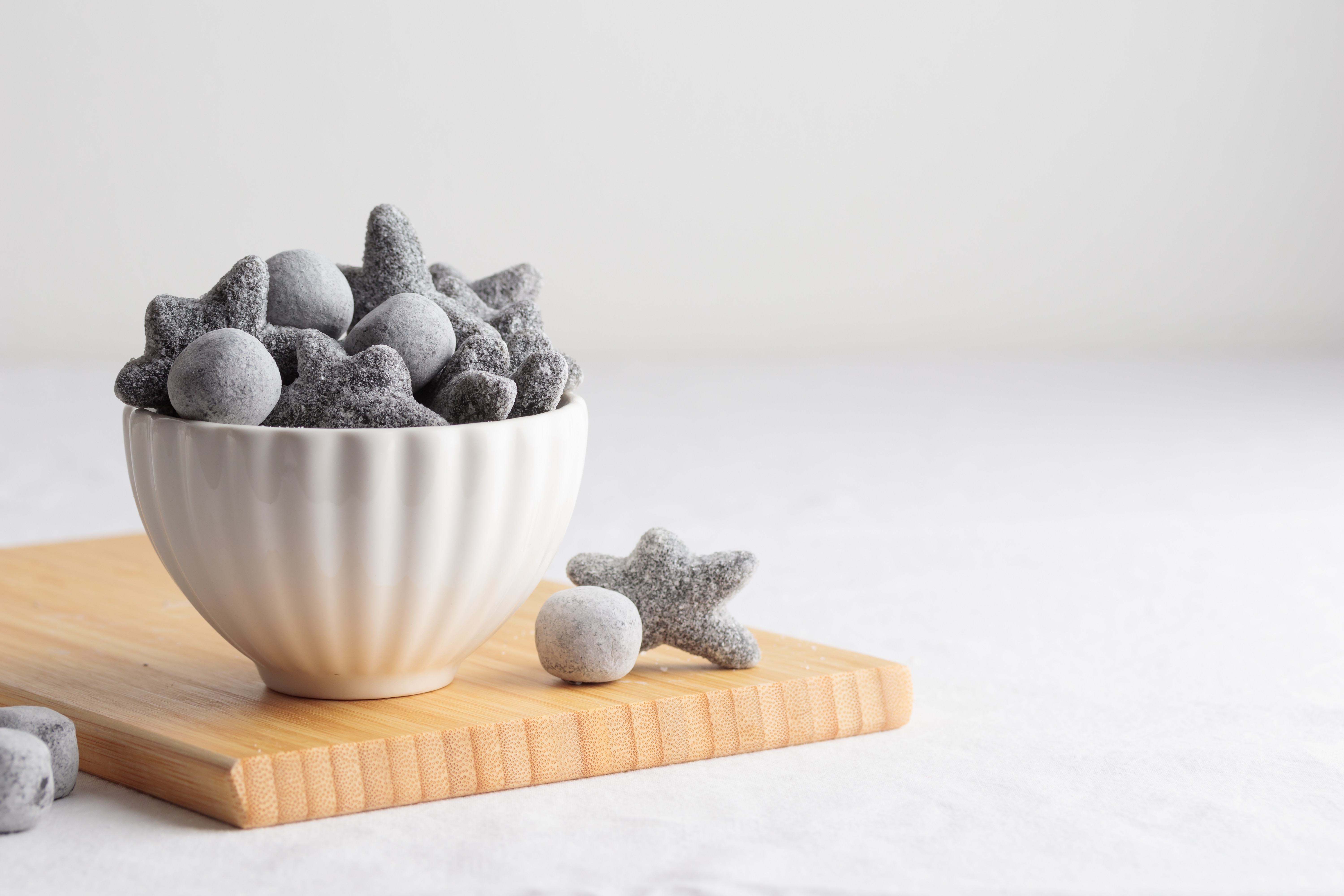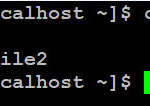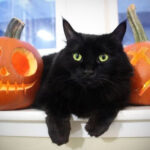In the captivating realm of feline genetics, novel discoveries continually emerge, capturing the fascination of both scientists and cat enthusiasts. Recently, a distinctive and visually striking coat pattern, now aptly named “salmiak,” has come to light. This unique coloration has piqued the interest of geneticists and pet parents alike. This article delves into the details of this intriguing coat color variant and highlights how the Wisdom Panel team played a crucial role in unraveling the genetic underpinnings of this remarkable appearance, often referred to as “Salty Licorice Cats” due to its resemblance to the popular candy.
The Emergence of a Striking New Coat Pattern
The story of “salty licorice cats” began in 2007 when cats displaying an unusual fur pattern were first observed among domestic cats in central Finland. These cats, typically found within a feral population predominated by black and black-and-white felines, exhibited a standard black-and-white “tuxedo” pattern. However, what set them apart was an extraordinary gradation of color within individual hairs in their pigmented areas. This resulted in a unique effect where the base of the hair shaft retained its color while the tips appeared white, creating the distinctive “salty licorice” look.
Initially a rare sight confined to central Finland and stemming from the same wild cat lineage, these “salty licorice cats” were exclusively observed in non-pedigreed populations. Due to neutering programs for stray cats, the reproductive potential of these cats remained unknown for some time. However, recent evidence surfaced, confirming the reproductive capability of these unique felines when a “salty licorice cat” was observed giving birth to a litter of four kittens, further solidifying the presence of this trait.
Intrigued by the captivating appearance of these cats and in possession of a genetic sample, researchers at the University of Helsinki sought the expertise of the Wisdom Panel team. They requested assistance in investigating the genetic basis of this novel coat color, and the Wisdom Panel team eagerly joined the effort to unlock the secrets behind these “salty licorice cats”.
Decoding the Genetics of Salty Licorice Cats
The collaborative study commenced with genotyping known feline coat color variants using the MyCatDNA™ panel screening test. This initial analysis revealed that the distinctive white-tipped hairs characteristic of “salty licorice cats” lacked any known genetic explanation. This intriguing finding further deepened the mystery surrounding this unique coloration.
Driven by curiosity, the University of Helsinki researchers broadened their investigation by launching a public appeal through a national newspaper, seeking information on sightings of cats exhibiting a similar pattern. This outreach proved successful, leading to the discovery of additional cats displaying the “salty licorice” coat. Interestingly, the pattern was not limited to solid black cats; it was also observed in cats with blue, brown tabby, and tortoiseshell coat colors, demonstrating its versatility across different feline colorations.
Further genotyping using the MyCatDNA panel test definitively confirmed that the atypical white patterning of these “salty licorice cats” originated from a previously unknown genetic mechanism. Globally, white patterning and full white color in cats, both pedigreed and non-pedigreed, are largely attributed to two common variants of the KIT gene (also known as White, or W locus). Additionally, the breed-defining white paws seen in Birman cats are linked to another variant within the KIT gene. Considering the Finnish origin of these “salty licorice cats” and the resemblance of their coat to the local salty licorice candy “salmiak”, researchers hypothesized that the KIT gene was the most probable candidate gene responsible for this newly discovered white fur pattern, and subsequently named the color “salmiak”.
 A bowl of salty licorice candy on a wooden board.
A bowl of salty licorice candy on a wooden board.
A tempting bowl of salty licorice candy displayed on a wooden board, visually representing the inspiration behind the “salmiak” cat coat color name.
To advance the collaborative investigation with the University of Helsinki, whole-genome sequencing was performed on two “salmiak”-colored cats. This in-depth genetic analysis focused on the KIT gene region. Initial examinations did not reveal any unique variants within the coding region of the KIT gene itself. However, meticulous visual inspection of the sequence data unveiled a substantial deletion in the vicinity of the KIT gene in both “salmiak cats”. This significant deletion suggested a potential impact on gene expression, offering a plausible explanation for the unique coat pattern. Genotyping a larger population of Finnish domestic cats for this newly discovered variant conclusively confirmed that the novel KIT variant was perfectly correlated with the “salmiak” appearance. Further genetic analysis established that the “salmiak” color pattern follows a recessive inheritance pattern. This means that for a cat to exhibit the “salty licorice” coat, it must inherit one copy of the salmiak variant from each parent, resulting in the visible trait.
Concluding Thoughts on Salty Licorice Cats
The identification of the salmiak variant significantly enriches our comprehensive understanding of the intricate world of feline coat color genetics. Beyond academic interest, this discovery holds potential practical value for cat breeding. This knowledge could be instrumental in breeding programs aimed at preserving and potentially propagating this distinctive and captivating “salty licorice” coat pattern within our feline companions, ensuring that these unique cats continue to grace the feline world.


